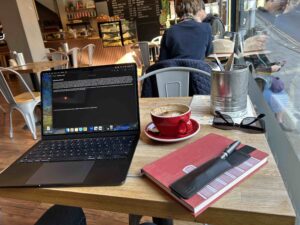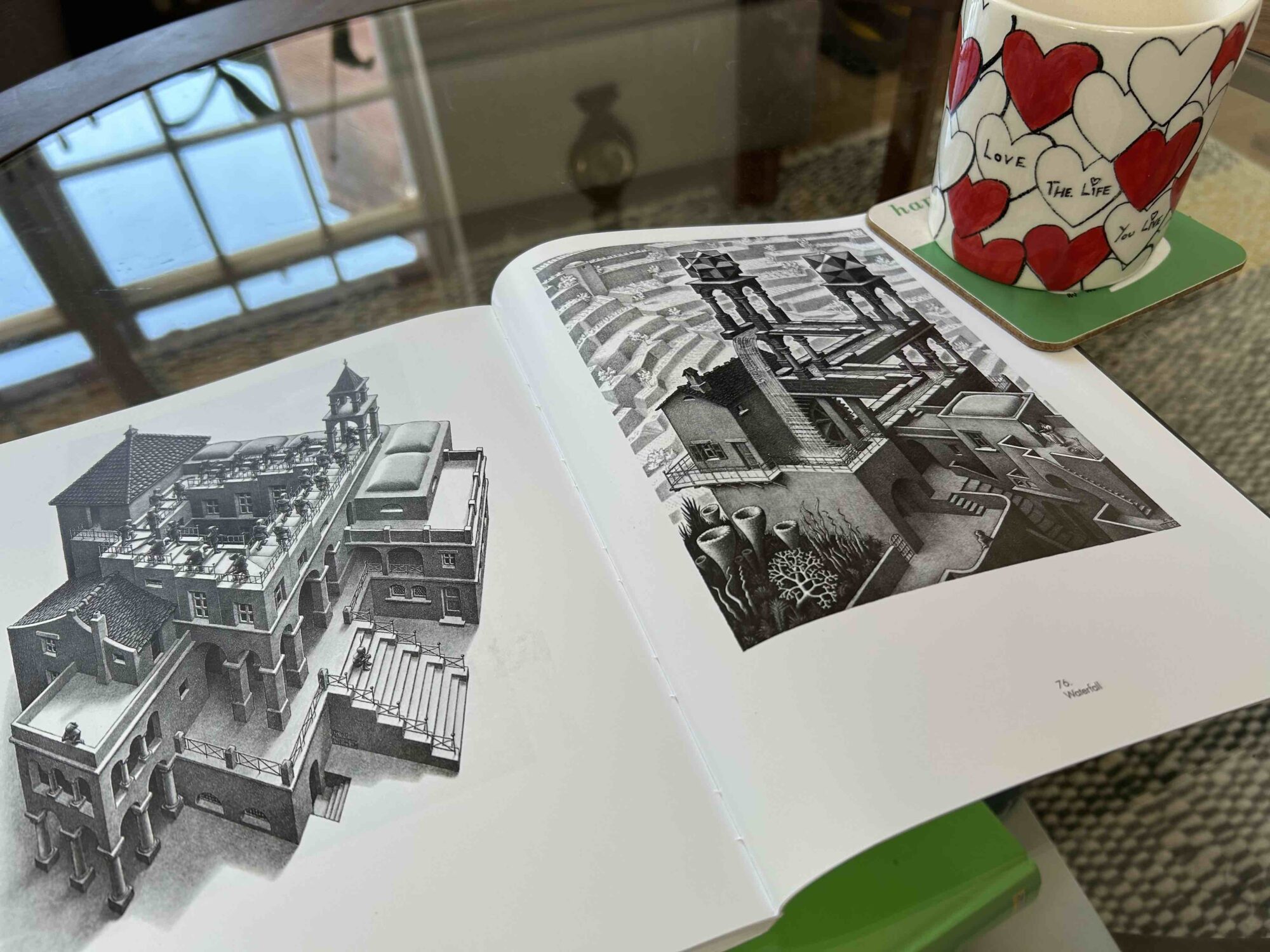This post was to share my most recent “blog to book” intention, having used this model of developing content successfully last time around. And I still do want to (and will) share some of my plans ahead for book 2 on humanistic psychotherapy. I want to share how last week, the day I spent reacquainting myself with what I have written so far revealed nearly 90,000 words of historical and theoretical context (Part 1) and another 10k of a drafted research paper (Part 2) that will form the pivot in the book toward a more practical Part 3. Part 3 is inspired by the text “Gestalt: 100 key points and techniques” by Dave Mann. As a trainee and tutor, I have valued this book’s short, pithy chapters covering themes in Gestalt theory and practice. Each chapter is no more than 3 to 4 pages,; and so it’s a book a therapist can dip into and take a lot from. It’s my aspiration to do something similar for budding humanistic practitioners wishing to take their trade from counselling to psychotherapy*. Some 64 topics in my mind, and readers might twig this could be a runaway train of a text! At present, this book is shaping up to come in at 120,000 words…and while I could go cap in hand to Routledge, I know I will need to perform a big edit come the autumn when I hope to pitch the work.
This WAS to be the theme of this blog. And yet the update of my plans, the maths all felt very mechanical, dry. I’m excited that I can share the excitement of my day last week doing this re-connect and planning. Double excitement! I’m also excited that my Friday mornings are set for the summer months; excited that I can take each of these themes and spend a couple of hours each session, “blogging” the theme before collating them into Part 3. I thrive in establishing ritual and structure; I am a creature of habit…a title emerging through the dance with a fellow cafe dweller when we shared we would rather be in each other’s seats, “our usual”. I danced into the corner, she took my seat at the table she likes to share with a friend. We shared a laugh. A connection that felt in polarity to the dryness of the post I was to write.
 I have come to experience writing as less informational delivery and more the sharing of my soul. Not merely expression, but a working out, coming to know. Just this week I have witnessed something similar in the tutorial times spent with trainees on our counselling and psychotherapy programmes. I love the connection I have in these 15 to 20 minute one-to-ones. Students come with varying intents: questions regarding content, concerns about connecting theory with experience, or some, simply wishing to share their process. The latter is especially the case with the MSc students I am supervising for their research dissertation. Many of the cohort I am supervising this time around ** are using the heuristic methodology, and this in itself is a deeply reflective process; one that too leads us to write ourselves as well as the dissertation end product. Whether the 15,000 word dissertation or the shorter 3000 word pieces, I find it such a privilege to witness the stories the trainees are trying to tell through their work with clients, or more personal reflective pieces. Yes, there IS an assignment to produce; yet the REAL aim is to use these pieces as vehicles of exploration: who am I? What can I come to know about the topic / the client / about “me” in the answering of a question. I really don’t mind what the students write about, or have a personal agenda about what they should conclude. What I care about is whether they find the freedom to develop their own ideas, to tell their own stories. To visit the habits of their being and find the liberation to re-write a story and find new possibilities.
I have come to experience writing as less informational delivery and more the sharing of my soul. Not merely expression, but a working out, coming to know. Just this week I have witnessed something similar in the tutorial times spent with trainees on our counselling and psychotherapy programmes. I love the connection I have in these 15 to 20 minute one-to-ones. Students come with varying intents: questions regarding content, concerns about connecting theory with experience, or some, simply wishing to share their process. The latter is especially the case with the MSc students I am supervising for their research dissertation. Many of the cohort I am supervising this time around ** are using the heuristic methodology, and this in itself is a deeply reflective process; one that too leads us to write ourselves as well as the dissertation end product. Whether the 15,000 word dissertation or the shorter 3000 word pieces, I find it such a privilege to witness the stories the trainees are trying to tell through their work with clients, or more personal reflective pieces. Yes, there IS an assignment to produce; yet the REAL aim is to use these pieces as vehicles of exploration: who am I? What can I come to know about the topic / the client / about “me” in the answering of a question. I really don’t mind what the students write about, or have a personal agenda about what they should conclude. What I care about is whether they find the freedom to develop their own ideas, to tell their own stories. To visit the habits of their being and find the liberation to re-write a story and find new possibilities.
Some theorists suggest this is all therapy is: the opportunity to share and re-write our story. I have come to understand this view more since I came to see and develop writing as practice alongside my therapy and Buddhist practice. I have long used writing to understand theory: as a research scientist originally, then as a coach of athletes. Now, I write not only to understand ideas, but to understand the idea of me. Not unlike my own book predicament, some of the students I met with this week were concerned about going over the word limit. “How do I not write too much?” is their concern. I can’t answer that for them. I can only share that in my experience, I have needed to write what was there to write – to start with that “surrender to the freefall” and not feel constrained. Whilst this can result in (very) long first drafts, I feel at least everything that needs to be known, put out on the table top as it were, is there in my awareness. This freedom to be all that I am without the need to edit and constrain is a paralleling of a personal process.
The ways we present by default an edited and constrained version of ourselves has various terms assigned to it: scripts, modifications to contact, conditions of worth. Most recently, I have been considering enduring relational themes*** in part because of the opportunity to witness group processes. I feel the pain of those in the groups, struggling to have their relational needs met and repeating the patterns of old. I can feel their pain because I know my own. Just yesterday I was working with a group in an experiential workshop, sharing how in my experience its only in deeply knowing our personal wound – our “hook” – can we find compassion for Other: the depth, size, nature of our individual wounds might differ, but we can recognise the common experience of pain and suffering (com – with, passion – suffering). Telling the story of our wounding is part of the healing process; having it witnessed and cherished gives the much needed air. And there is something similar found in the writing to the story that has helped me experience as well as describe the wound. Writing has helped me dwell in and feel my story not just “talk about” it. What we are arriving at here is the relational nature of healing – whether our story is told in therapy to an Other that witnesses, holds, and encourages a leaning into the experience; or in writing where the relationship forms in the typing or holding of a pen, something kinaesthetic, with the page…whether anyone reads it or not.
It feels somewhat appropriate that this blog post took an unexpected turn this morning, as I am about embark on a new phase of story. Not just the mandala creation I spoke of last week; I am also about to embark on a new therapeutic journey. As I meditated this morning, I felt that nervous excitement of telling my story…again, yet anew. And the new relationship in which it will be told. Whilst having breakfast with a friend yesterday, it occurred to me how much the story of me (and the narrator) has shifted and changed in the past 20 years; in each re-telling, an editing process, addendum, complete re-writes! The re-writing is not of events per se, more the way they have been interpreted and experienced. Underlying it all is the recognition that I am not the noun Helen, more a constantly re-arising and becoming, a Helen-ing. The more I allow that, the less constricted I am; the more possibilities I can feel into and explore. Those relational themes become less enduring, eroded.
We move from being creatures of habit to creatures of possibility.
—————
*Are the in fact discrete activities as the use of two terms suggest? That is the point of Part 2, my research study
**Our MSc psychotherapy programme runs every alternate year
*** defined by Gestalt therapy as core beliefs and patterns about relationships that significantly shape a person’s experiences and behaviours in their relationships, including therapeutic ones

